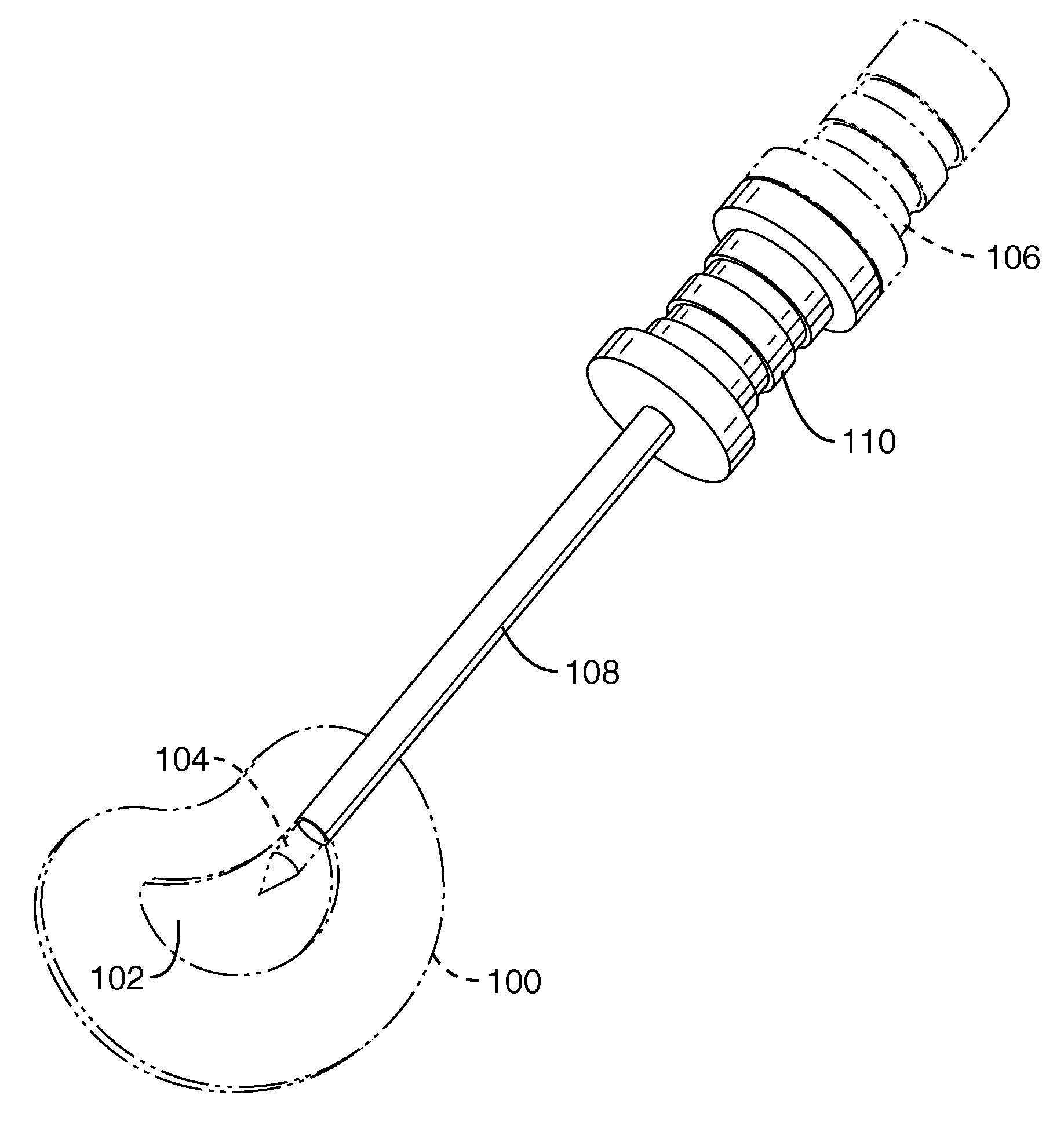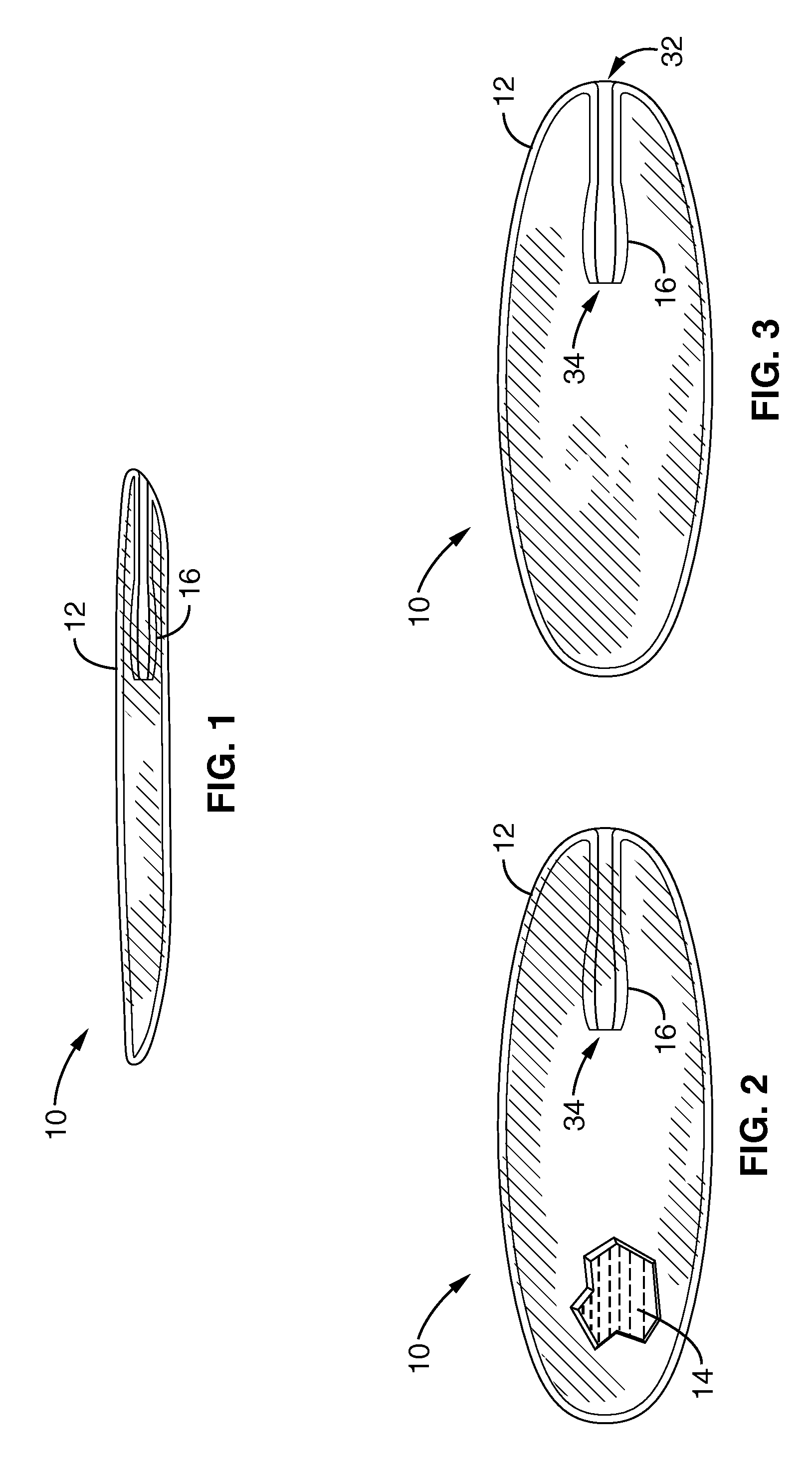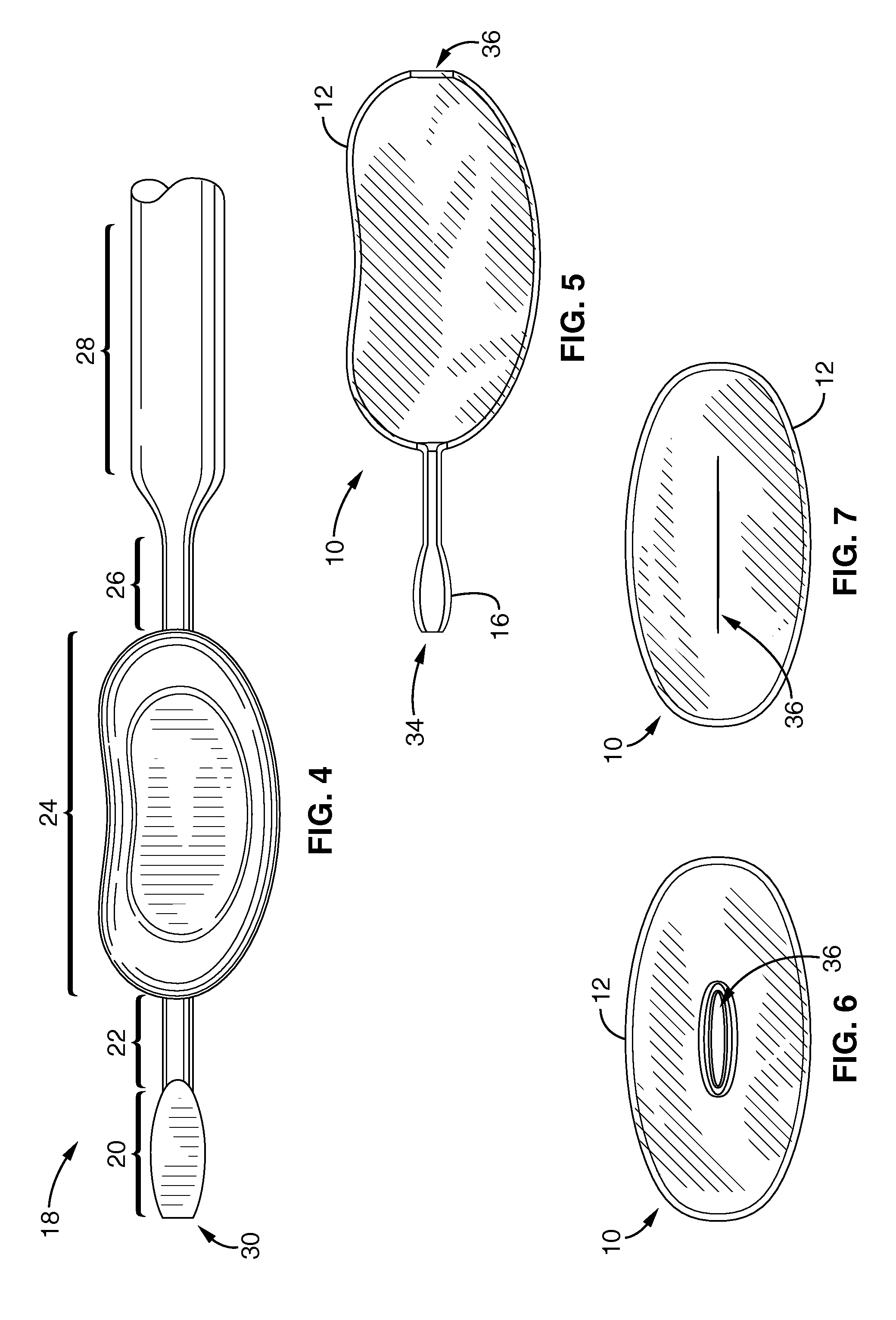Systems, devices and methods for treatment of intervertebral disorders
- Summary
- Abstract
- Description
- Claims
- Application Information
AI Technical Summary
Benefits of technology
Problems solved by technology
Method used
Image
Examples
example 1
[0119]Prototype implant shells were fabricated by Apex Biomedical (San Diego, Calif.). The fabrication process included dip molding using a custom-fabricated mandrel. The mandrel was dipped so that the elastomer thickness was between 5 and 7 mils (0.13-0.17 mm). After dipping, the implant was removed from the mandrel, inverted (so that the stem was inside the implant) and heat-sealed at the open end. This process resulted in a prototype that could be filled with the PEG gel, which when cross-linked could not exit through the implant stem. The stem effectively sealed the implant by functioning as a “flapper valve”. This means that by being placed within the implant, internal pressures (that might serve to extrude the gel) compress and seal the stem, creating a barrier to extrusion. This sealing mechanism was verified by in vitro testing.
example 2
[0120]Elastomer bags filled with PEG were compressed to failure between two parallel platens. The implants failed at the heat seal at approximately 250 Newtons force. These experiments demonstrated that under hyper-pressurization, the failure mechanism was rupture at the sealed edge, rather than extrusion of gel through the insertion stem. When the device is placed within the intervertebral disc, support by the annulus and vertebral body results in a significantly increased failure load and altered construct failure mechanism.
example 3
[0121]Ex vivo mechanical testing were performed with human cadaveric spines to characterize the performance of the device under expected extreme in vivo conditions. We conducted a series of experiments that consisted of placing the device in human cadaveric discs using the developed surgical protocols and then testing the construct to failure under compressive loading. The objective of these experiments was to characterize the failure load and failure mechanism. The target failure load was to exceed five times body weight (anticipated extremes of in vivo loading). Importantly, the failure mode was to be endplate fracture and extrusion of the implant into the adjacent vertebra. This is the mode of disc injury in healthy spines. We did not want the construct to fail by extrusion through the annulus, particularly through the insertion hole, since this would place the hydrogel in close proximity to sensitive neural structures.
[0122]Load-to-failure experiments demonstrated that the impla...
PUM
| Property | Measurement | Unit |
|---|---|---|
| Thickness | aaaaa | aaaaa |
| Force | aaaaa | aaaaa |
| Molecular weight | aaaaa | aaaaa |
Abstract
Description
Claims
Application Information
 Login to View More
Login to View More - R&D
- Intellectual Property
- Life Sciences
- Materials
- Tech Scout
- Unparalleled Data Quality
- Higher Quality Content
- 60% Fewer Hallucinations
Browse by: Latest US Patents, China's latest patents, Technical Efficacy Thesaurus, Application Domain, Technology Topic, Popular Technical Reports.
© 2025 PatSnap. All rights reserved.Legal|Privacy policy|Modern Slavery Act Transparency Statement|Sitemap|About US| Contact US: help@patsnap.com



